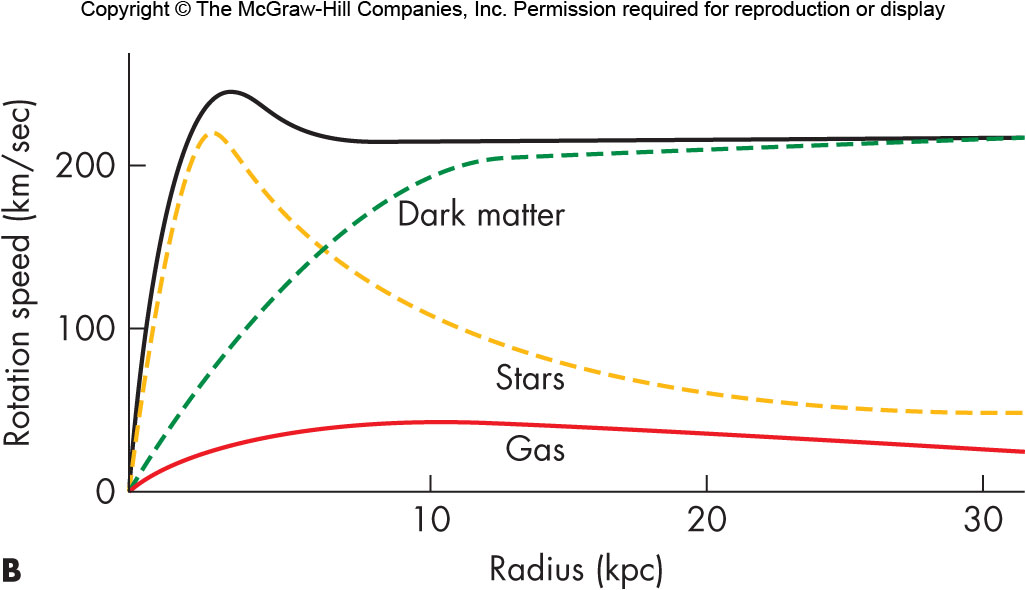The Sun moves relative to local halo stars at a speed of 250 km/s.
The Sun moves relative to the LSR (Local Standard of Rest) at a speed of 20 km/sec in the direction 18h08m +30°.
(LSR moves at the center-of-mass velocity of stars in the solar neighberhood in the galactic disk.)
The LSR moves around the galactic center nearly circularly at a speed of 240 km/sec.
(Schonrich 2012, MNRAS 427, 274; Kushniruk et al. 2017, A&A 608 A73)
2πr / v = 2.0 x 108 years
The mass inner to the solar orbit can be estimated as
M = (v2/r) (r2/G) = 1.0 x 1011 M⊙
Orbital speeds approach a constant in the outer part of the Galaxy, instead of a Keplerian fall-off. (Should one expect such a fall-off?)
The luminous mass in our Galaxy can account for only 10% of the total mass inferred from the orbital speeds, which exceeds 1012 M⊙.
[All spiral galaxies show similar rotation curves.]

[An example of adding dar matter to explain the rotation curves of galaxies.]
MACHOs (MAssive Compact Halo Objects, like brown dwarfs, white dwarfs, black holes)? --- way less than required.
Neutrinos? --- hot and less than required.
WIMPs (Weakly Interacting Massive Particles)? --- still mysterious.
Other alternatives? Modified Newtonian Dynamics (MOND)? New theory for gravity?